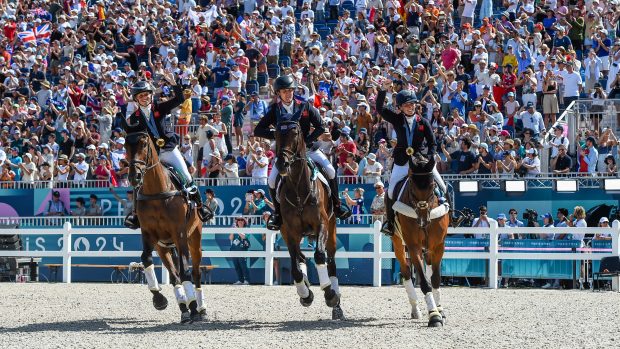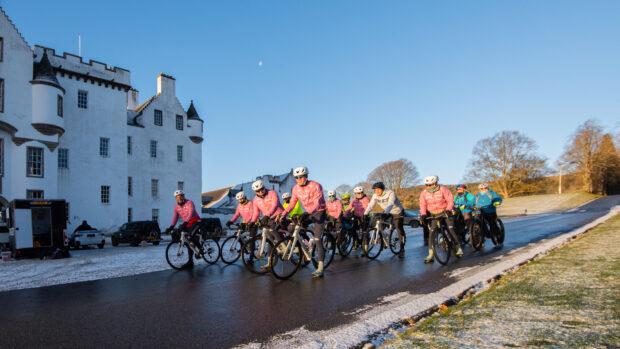The story of a horse who would not be caught for weeks – and later bolted into a fence – who is now successfully competing shines a spotlight on both equine and human behaviour change.
Hannah Bryant and her Welsh cob Gavin feature at the National Equine Forum today (2 March), with Horse Trust director of equine behaviour Gemma Pearson and social scientist Tamzin Furtado.
The aim was to use Hannah and Gav’s story to explore the science behind the way people and horses learn, what makes horses behave as they do, and how to tackle unwanted behaviour.
Hannah told H&H she bought Gav as a five-year-old, six years ago. She constructed a paddock at her livery yard so he could be kept in temporary isolation.
“On the first night, he got through the electric fencing and in with horses who weren’t in isolation,” she said. “We then realised he had a very strong fear response to people, and it became a massive problem. We couldn’t get within 25m of him.”
After four weeks, Hannah’s vet recommended Dr Pearson.
Dr Pearson told H&H that Hannah “must have been under a phenomenal amount of pressure”.
She added that Hannah had got close enough for Gav to take a mouthful of feed before he ran off, which was progress.
“But that’s really reinforcing,” she said. “He got the food and was increasing the distance [between himself and Hannah] by running away. I did the opposite.”
Dr Pearson would back off herself before Gav got any food; she would increase the distance rather than him. She introduced the cue word “good”, and within two sessions, progressing very slowly from being able to scratch Gav, was able to catch him.
“It’s about recognising what’s motivating the behaviour, which Hannah certainly did,” Dr Pearson said. “Others thought he was ‘taking the mickey’ but she saw that he was very fearful, and what was reinforcing that was the increased distance.”
Hannah said the process “seemed somewhat magical”, as they worked through Gav’s terror of being stabled.
But a couple of years later, Hannah needed Dr Pearson’s help again, as Gav had started to rear and bolt, on one occasion breaking a fence at a competition venue.z
After Gav had had a full examination to eliminate pain, Dr Pearson worked with Gav from the ground. She retrained his response to bit pressure by asking him to step backwards at light pressure. With Hannah on, the cue word and food rewards were reintroduced when Gav responded appropriately to light pressure.
Hannah is now competing at novice and elementary level British Dressage.
“The big thing for me is that I’m enjoying him, and he’s a nice, proper horse,” Hannah said. “He’s stabled regularly, we compete and go to stay-away shows; we’ve just had another top-10 Area Festival finish. Gemma’s incredible and the skills she’s taught me have enabled Gavin and me to do far more than I ever expected.”
Hannah said she hopes her story will encourage other owners to think broadly in terms of solutions to unwanted behaviour, and also to highlight the influence other riders can have, both positive and negative.
“Be open-minded, but aware of the impact you can have on each other,” she said.
Dr Furtado told H&H her role is to think about the situation from the perspective of human behaviour change.
“This is a great example of someone who’s managed successfully to understand her horse, change his behaviour and come out of it really well,” she said. “So what is it that’s made her be able to be so successful, and what can we learn from it?”
Dr Furtado cited rider feelings of embarrassment or humiliation caused by unwanted equine behaviour, and asked why this is common, especially on livery yards. She said this could have put more pressure on Hannah.
“Gemma and I have done lots of talks, her on equine behaviour and me on human and we always say they’re so similar,” she said. “Whenever you’re helping a horse with a behavioural issue, it’s also so much to do with people.
“Try to set horses up for success and make change easy, break change down into small steps; positive reinforcement – that’s exactly the approach that works for people.”
Dr Furtado cited Hannah’s open-mindedness.
“If I could ask the audience to take two things from Hannah’s story, it would be first not to underestimate the impact we have on one another,” she said. “Our support and understanding can make the difference between someone being able to cope with a tricky situation with their horse, and feeling a failure. Second, it would be to remember Hannah’s open-mindedness, but also her commitment to look at the horse in front of her and find an approach that worked with what she was seeing. When people told her he was being naughty, she listened, then disregarded their input because she could see that wasn’t the case – and she found an approach that matched with what she could see, instead.”
Dr Pearson added that it was “lovely” to see Hannah and Gav’s progress, and advised anyone experiencing unwanted behaviours to work with an accredited behaviourist. She added that there are helpful resources on equine learning theory on the International Society for Equitation Science website.
You might also be interested in:

Forage is key when tackling undesirable behaviour in horses

Horse & Hound’s beginners’ guide to clicker training

Subscribe to Horse & Hound magazine today – and enjoy unlimited website access all year round
Horse & Hound magazine, out every Thursday, is packed with all the latest news and reports, as well as interviews, specials, nostalgia, vet and training advice. Find how you can enjoy the magazine delivered to your door every week, plus options to upgrade your subscription to access our online service that brings you breaking news and reports as well as other benefits.





